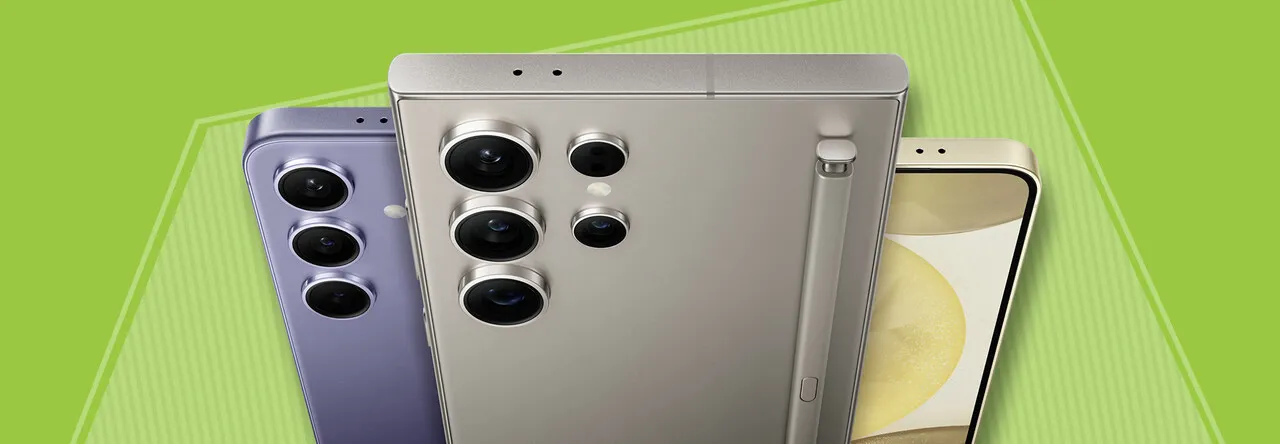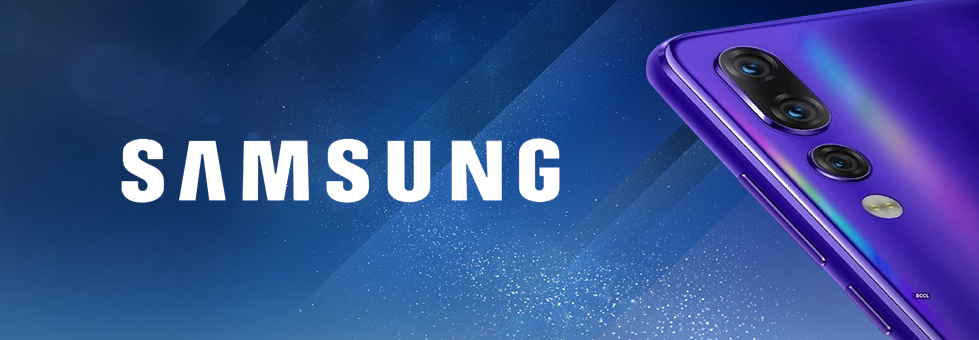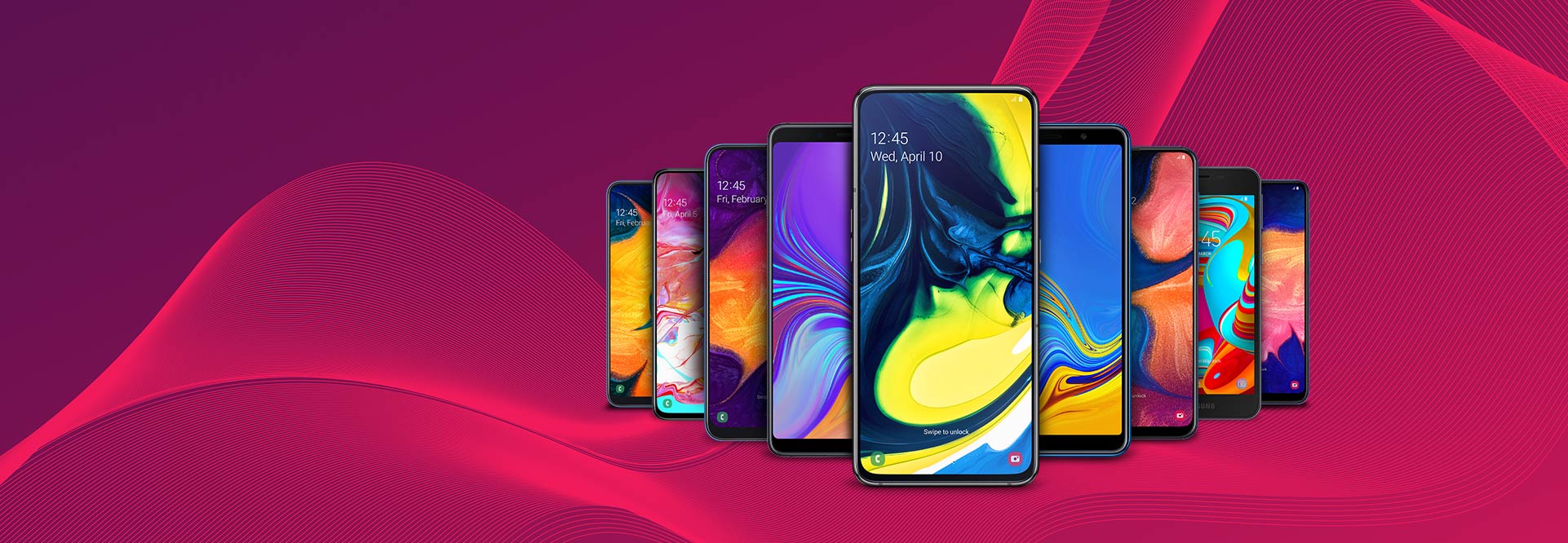Samsung Galaxy S24 Launch: The Ultimate Compact Flagship
Mondo Admin / 19-01-2024 / Tech
The new Samsung Galaxy S24 range has just launched to much fanfare and excitement. Thanks to its sleek design, faster processor, enhanced camera capabilities and innovative "Galaxy AI" features, the base model Galaxy S24 is set to be the best compact phone of the year. Let’s take an in-depth look at all the new features and improvements that make the Galaxy S24 a standout choice.
A Perfect Blend of Power and Elegance
The base Galaxy S24 boasts a compact size, measuring just 6.2 inches, making it ideal for those who prefer a smaller form factor. The slim profile and flat sides not only enhance its aesthetics but also provide a comfortable grip. The new Armor Aluminium frame adds durability, while the matte finish on the sides prevents fingerprint smudges. With its IP68 rating, the Galaxy S24 is also dust and water-resistant.
The Galaxy S24 and S24+ comes in Jade Green, Amber Yellow, Marble Gray, Onyx Black and Cobalt Violet colour options, along with the exclusive Sapphire Blue and Sandstone Orange available in Samsung stores. The S24 Ultra comes in Titanium Yellow, Titanium Violet, Titanium Black, Titanium Gray and the exclusive Titanium Orange, Titanium Green and Titanium Blue.
Display: Immersive Visuals and Enhanced Brightness
Compared to the Galaxy S23, the new model features a slightly larger 6.17-inch OLED display that offers an immersive visual experience on a larger viewing area thanks to the slimmer bezels. A peak brightness of 2600 nits ensure excellent visibility even in direct sunlight, making it perfect for outdoor usage. The addition of a 1Hz-120Hz refresh rate, previously exclusive to the Ultra models, allows for smoother scrolling and reduced power consumption. Despite maintaining a 1080p resolution, the display is sharp and vibrant.
Cameras: Capture the World in Stunning Detail
Equipped with a triple camera setup, the Galaxy S24 delivers exceptional photography capabilities. The main 50MP camera sensor ensures sharp and detailed images, even in low-light conditions. The 10MP 3X zoom camera enables you to capture distant subjects with incredible clarity while the 12MP ultra-wide camera allows you to fit more into your frame, which is perfect for landscape shots and group photos. The front camera is a 12MP shooter with auto focus for stunning selfies.
Although the hardware remains unchanged from the previous model, the S24 introduces significant improvements in camera processing. The addition of HDR preview in the viewfinder enables you to see exactly how your photo will turn out before capturing it. The Galaxy S24 also incorporates a new colour science, resulting in more natural-looking images with improved colour accuracy. The new "Galaxy AI" features further enhance the photo editing capabilities, allowing you to remove imperfections, straighten crooked photos and even tweak subjects within the frame.
Performance: Power Meets Intelligence
Powered by the Qualcomm Snapdragon 8 Gen 3 chipset or the Exynos 2400 in some markets, the Galaxy S24 offers impressive performance capabilities. This new processor provides faster speeds and intelligent optimisation using the "Galaxy AI" technology. The base model ships with 8GB of RAM, which is more than enough for smooth multitasking and app performance. It also offers 128GB of storage, with an option to upgrade to 256GB.
Software: An Intuitive User Experience
The Galaxy S24 runs on Android 14, overlaid with Samsung's latest One UI 6.1. This offers a seamless and intuitive user experience. The One UI 6.1 interface features a refined design, ensuring ease of use and accessibility. The Galaxy S24 also introduces several AI-powered features that enhance productivity and convenience, such as real-time translation of phone calls, making communication across different languages effortless. Additionally, the new Circle to Search with Google feature enables quick searches by simply circling objects on the screen.
Battery: Endurance for Your Everyday Needs
The Galaxy S24 is equipped with a large 4000mAh battery, offering ample power to keep you going throughout the day. The efficient chipset and display, coupled with the supported 1Hz refresh rate, contribute to optimised power consumption. The device supports 25W wired charging and 15W wireless charging, ensuring quick and convenient charging options.
A Compelling Choice for Compact Phone Enthusiasts
The improvements in performance, design and camera capabilities make the Galaxy S24 stand out among compact flagship phones, which are becoming more rare each year. The introduction of "Galaxy AI" features adds a new level of convenience and creativity to the user experience, but at this stage, it could be more of a novelty than a full-on AI experience on the go. The Galaxy S24 is a compelling choice that ticks all the boxes, as expected from Samsung.
Stay tuned for our full reviews of the Samsung Galaxy S24 range, but in the meantime, check out our hottest Samsung deals here






